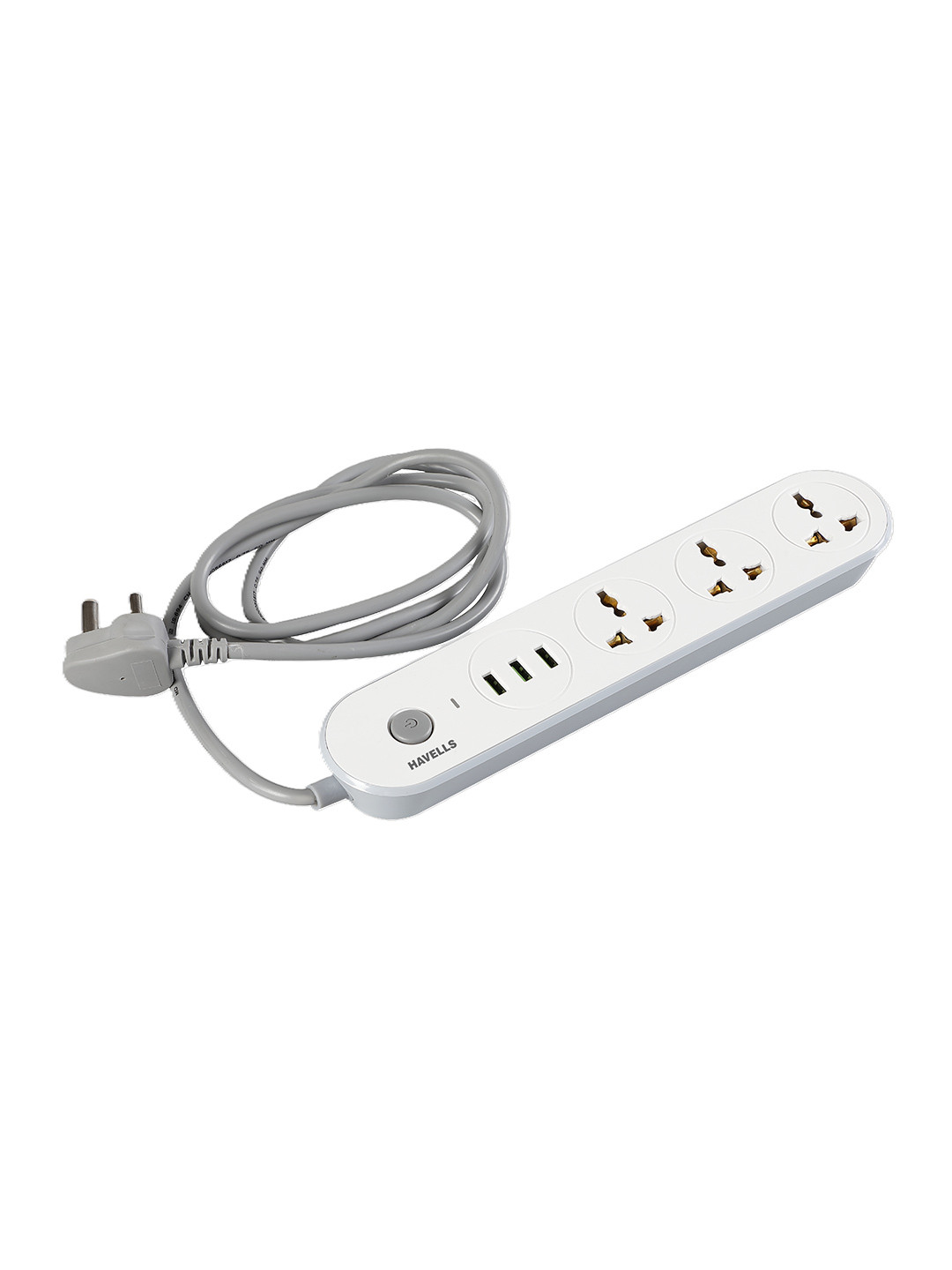Get Rid Of The Cooking Smell, Know How And Check Out 8 Best Kitchen Chimneys On Flipkart From LIVPURE, V-Guard, Crompton To Whirlpool
Despite a spotless countertop and freshly washed utensils, your kitchen still greets you with the stubborn scent of stale food. Here's why odours linger long after the cooking is done, and how to choose a chimney that does the job. Here are 8 best kitchen chimneys on Flipkart from LIVPURE, V-Guard, Crompton, Whirlpool, Faber, Kutchina and more.

Why Your Kitchen Smells After Cooking: How to Pick A Chimney That Works From Flipkart
Ever whipped up a cracking Sunday roast only to find your kitchen smelling like a greasy spoon days later? You're not alone. Kitchens are memory-keepers, not just for stories and shared meals, but for every whiff of garlic, every trail of steam, and every oil particle that clings to the walls. While cooking aromas can be delightful in the moment, they often overstay their welcome, transforming your home into an unintentional olfactory museum. This is where the humble kitchen chimney comes in. Or rather, where the right chimney should be. Not all chimneys are created equal. Some hum in the background and gather dust; others suck the life (and the smell) right out of the room. Choosing the right one can be the difference between a fresh, breezy kitchen and a lingering curry cloud. Let's dig into why smells hang around even after you've scrubbed everything clean, how to pick a kitchen chimney that's more than just a fancy kitchen ornament and check out these 8 best ones on Flipkart from LIVPURE, V-Guard, Crompton, Whirlpool, Faber, Kutchina and more.
Why Your Kitchen Smells After Cooking: How to Pick A Chimney That Works And Check Out These 8 On Flipkart Including From LIVPURE, V-Guard, Crompton, Whirlpool, Faber, Kutchina and more; Photo Credit: Pexels
1. Cooking Creates More Than Just Flavour, It Releases Particles
It's easy to think of cooking smells as harmless little whiffs. But here's the thing: behind those mouth-watering aromas are microscopic grease particles, smoke, and volatile compounds. These tiny invaders float through the air and settle on surfaces like silent saboteurs. They cling to curtains, find homes in upholstery, and embed themselves in your walls.
Frying? That's the worst offender. A few sizzling pakoras or a crispy bacon breakfast, and you've got a fog of oil droplets making themselves comfortable. Even boiling or sautéing releases steam that's laced with food particles.
When there's nowhere for these to go, they linger. Traditional ventilation systems or a lone window often can't handle the load, especially in smaller, urban kitchens where airflow is limited. That's why simply airing out the room post-cooking doesn't cut it.
Enter the kitchen chimney, a gadget that's not just about aesthetics but action. A good chimney doesn't just suck up smoke; it captures those greasy offenders before they settle. But, as with anything, the devil's in the details.
2. Not All Chimneys Are Built Alike
Walk into any appliance store and you'll be dazzled by rows of chimneys gleaming like space-age gadgets. They all claim to be powerful, silent, and efficient. But behind the chrome finish, not every chimney is up to the task.
Some are designed for light Western-style cooking, think boiling pasta or steaming vegetables. Others are built to tackle the full-on spice-laden, high-temperature marathon that is Indian cooking. Choosing a chimney not suited to your cooking style is like bringing a teacup to a downpour.
Suction power, for instance, is more than just a number on a label. It determines how quickly and effectively the chimney can extract smoke and fumes. A low-suction chimney in a heavy-use kitchen will barely make a dent. Size matters too, a small chimney over a large stove is practically useless.
So, while that sleek, slimline model may look lovely above your hob, make sure it's got the muscle to match your meals.
3. Placement Plays a Pivotal Role
Even the best chimney will underperform if it's poorly placed. Think of it like an umbrella: it only works if it's covering your head. Similarly, a chimney that's too high above the stove, or off-centre, will struggle to capture all the fumes.
Ideally, the chimney should sit 24 to 30 inches above the cooktop, close enough to trap steam and smoke at the source, but not so close that it gets in your way. Its positioning should also account for the size and layout of your kitchen. A compact galley kitchen needs a different setup than a sprawling open-plan space.
Then there's the ducting. A long, winding duct will reduce the suction power significantly. If your chimney's exhaust has more twists and turns than a thriller novel, don't expect stellar performance.
Consult with an expert before installing. Sometimes a small tweak in placement can make a massive difference in how effectively your chimney works.
4. Filters Need Love Too
Here's an often-ignored truth: chimneys need cleaning. Yes, even the ones labelled “filterless” or “auto-clean.” Over time, the mesh or baffle filters (depending on the model) collect grease, soot, and grime. When neglected, these filters become choked, dramatically reducing suction power.
Dirty filters can also start to smell. So ironically, the very thing meant to keep your kitchen fresh can become a source of odour itself.
Baffle filters, commonly used in Indian kitchens, are better suited for handling oil and spices. They're easier to clean and don't get clogged as quickly as mesh filters. However, even these need a good scrub every couple of weeks, especially if you cook frequently.
Some high-end models now come with auto-clean technology, using heat or water to dislodge grease. But even then, a bit of manual intervention goes a long way. Like a well-maintained car, a clean chimney runs smoother and lasts longer.
5. The Size of Your Chimney Must Match the Stove
It's tempting to go for the most compact model, especially if space is tight. But the chimney's size should match the stove's width. Too narrow, and it'll miss half the action. Too big, and it becomes an unwieldy eyesore.
Standard hobs usually measure 60 to 90 cm. So your chimney should be roughly the same width, or slightly wider. This ensures it covers all burners and captures smoke from every pan, whether you're boiling rice or whipping up a five-course feast.
For homes with larger cooktops or more intense cooking routines, a wider chimney with higher suction power makes sense. Always check the specs. A misfit chimney not only fails to perform but also disrupts the aesthetic balance of your kitchen.
Think of it like pairing shoes with an outfit. Functional, yes, but style matters too.
6. Ducted or Ductless? Choose Wisely
This one stumps many. Ducted chimneys expel air outside, while ductless models filter and recirculate the air within. While both have their merits, they're not interchangeable.
Ducted chimneys are far more effective at removing heat, grease, and smoke. They're the go-to choice for heavy-duty cooking and are better for long-term use. The catch? They require proper ductwork, which might involve drilling, rerouting, or structural changes.
Ductless chimneys, on the other hand, are easier to install and suitable for apartments where external venting isn't feasible. But they rely heavily on carbon filters, which need regular replacement and aren't as efficient in handling high grease levels.
If you cook regularly and love a good fry-up, a ducted system is worth the extra hassle. For light use, a ductless option might suffice. Choose based on your lifestyle, not just convenience.
7. Noise Levels Can Make or Break the Experience
There's something deeply unsettling about a chimney that sounds like a jet engine. If every mealtime feels like takeoff, something's off. While performance is key, peace is priceless, especially in homes where the kitchen is a communal hub.
Modern chimneys offer low-noise motors, and some even feature silent operation modes. Check the decibel rating. Anything under 60 dB is considered comfortable. Beyond that, it can become a background irritation that slowly drives everyone up the wall.
It's worth testing the sound in-store or checking user reviews before buying. A whisper-quiet chimney adds a surprising sense of calm to cooking, especially when you're tackling a tricky new recipe or just trying to enjoy your evening chai.
Also Read: Wall-Mount vs. Island Chimneys: Which One Suits Your Kitchen Best?
8. Design, Aesthetics and the Bonus Features
Let's be honest, style matters. Kitchens aren't just functional anymore; they're showpieces. And your chimney, often sitting front and centre, should look the part. But form shouldn't overshadow function.
Look for sleek finishes that are easy to clean, intuitive controls, and lights that illuminate your hob without blinding you. Touch controls, digital displays, and motion sensors may sound like overkill, but they add convenience.
Smart chimneys are the latest players on the scene, connectivity, auto-sensing, voice commands. Useful? For some, yes. But not necessary for all. What matters most is how well it does the basics: removing smoke, trapping grease, and keeping the air fresh.
A well-chosen chimney doesn't just make your kitchen smell better. It makes the entire experience of cooking more enjoyable, healthier, and, dare one say, stylish.
Products Related To This Article
1. LIVPURE AIRIS-NEO-60 Pyramid Shape 60 cm
2. V-Guard M10 Pro 60cm
3. LIVPURE FENIX-60-FL-HAC Auto Clean Wall Mounted Black 1400 CMH Chimney
4. Crompton CHD-ISC60BFE-EC Auto Clean Curved Glass 60 cm
5. Whirlpool CGFL PRO 604 HAC BK HOOD Auto Clean Curved Glass 60 cm
6. FABER HOOD SYDNEY IN HC SC FL 60 Auto Clean Curved Glass
7. Hindware Smart Appliances Ripple 90 IN Auto Clean
8. Kutchina VIRGOSE DLX 75 Auto Clean Wall Mounted Black 1400 CMH Chimney
A lingering kitchen smell is more than just a nuisance, it's a sign that something isn't working as it should. Whether it's an outdated exhaust fan or a flashy chimney that's all bark and no bite, poor ventilation can take the joy out of cooking.
Choosing the right chimney isn't just about ticking boxes; it's about matching technology with your lifestyle. It's about understanding what your kitchen needs and investing in a solution that delivers day after day.
So next time your kitchen smells like yesterday's dinner, take it as a gentle nudge. Maybe it's time for an upgrade, one that clears the air and brings a little breathing room back into the heart of your home and these 8 best kitchen chimneys on Flipkart from LIVPURE, V-Guard, Crompton, Whirlpool, Faber, Kutchina and others will definitely do the job for you. Shop now on Flipkart.
Disclaimer: The images used in this article are for illustration purpose only. They may not be an exact representation of the products, categories and brands listed in this article.




























